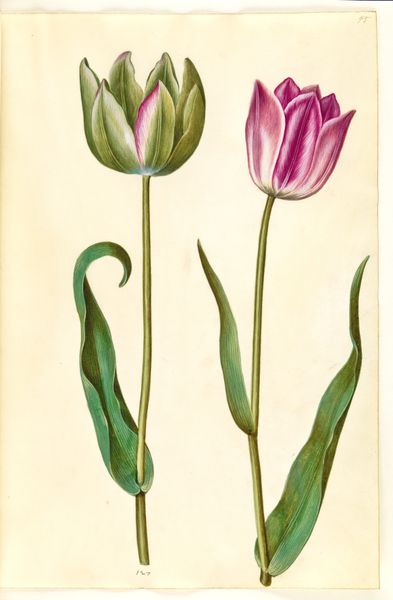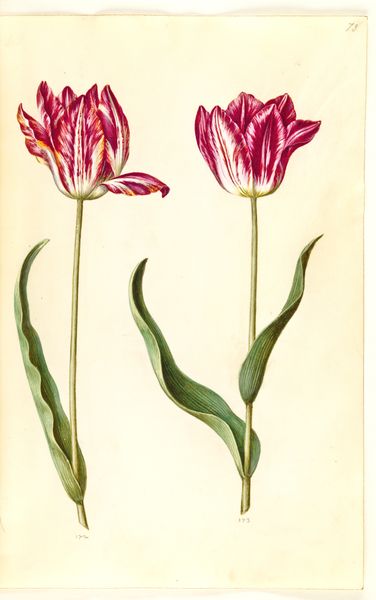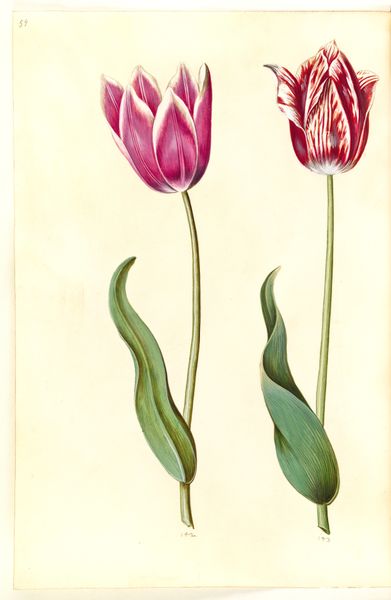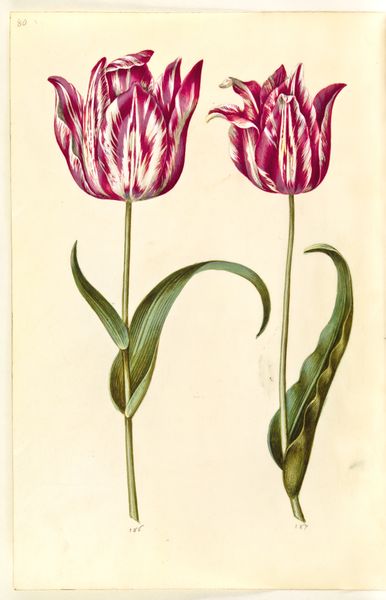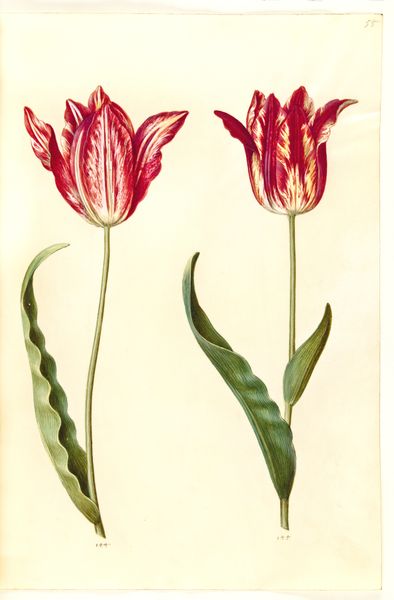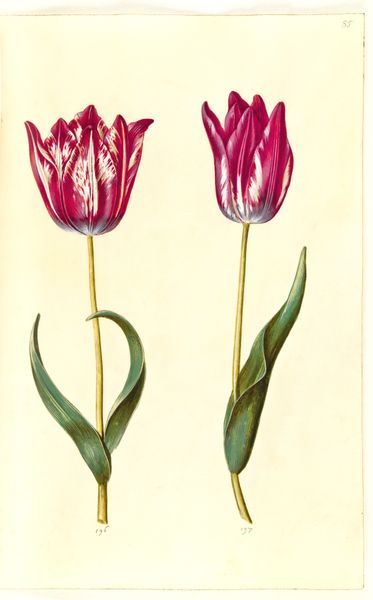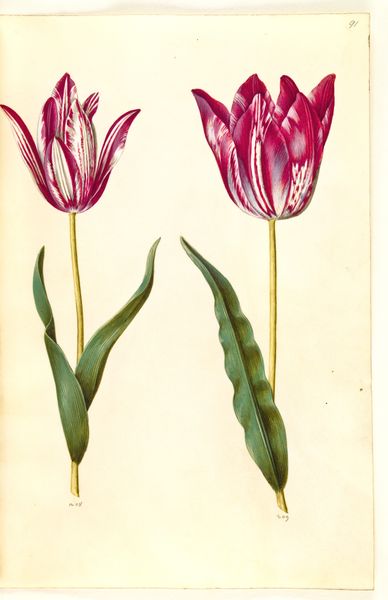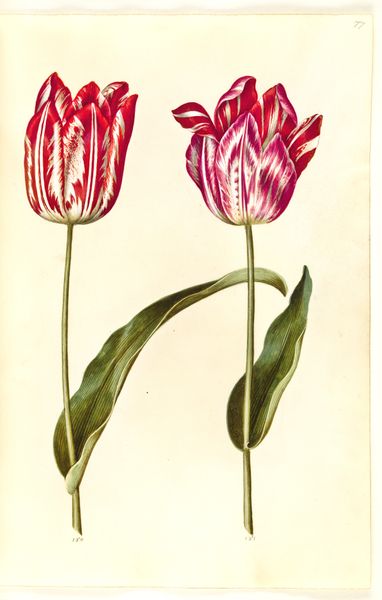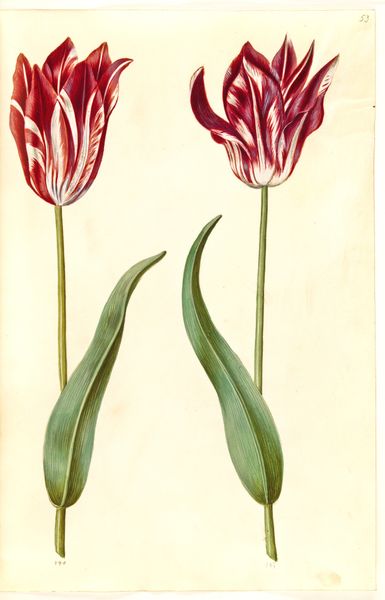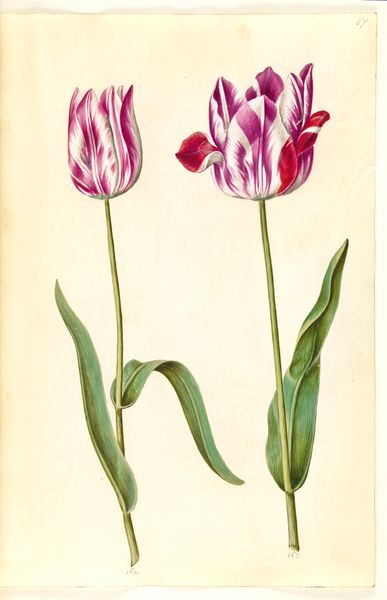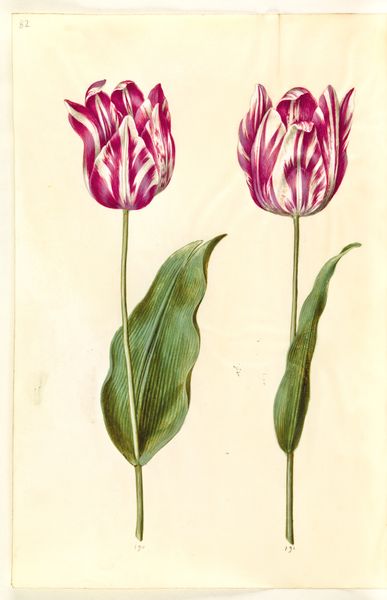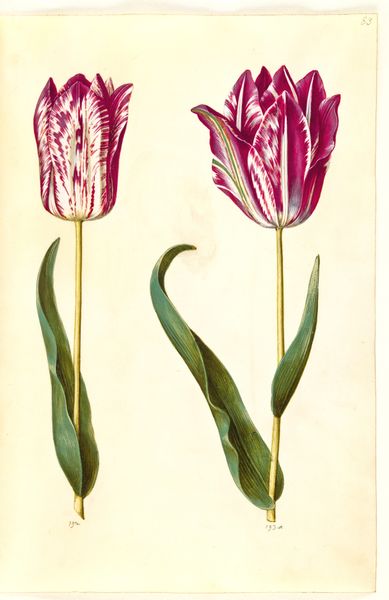
drawing, gouache
#
drawing
#
gouache
#
history-painting
#
botanical art
#
watercolor
Dimensions: 375 mm (height) x 265 mm (width) x 85 mm (depth) (monteringsmaal), 358 mm (height) x 250 mm (width) (bladmaal)
Hans Simon Holtzbecker made this botanical drawing of Tulipa gesneriana with watercolor and gouache on vellum. Notice the smooth surface of the vellum, achieved through careful preparation of calfskin. The colours appear vivid against the creamy surface of the animal hide. Holtzbecker applied thin, translucent washes of watercolor, building up layers of pigment to achieve the subtle gradations of colour in the petals and leaves. Gouache, an opaque watercolor, highlights the white edges of the purple petals. This rendering of the flower is not just aesthetically pleasing; it's a scientific record. At the time of its creation, the tulip was not simply a beautiful flower, but a symbol of wealth and status. The 'Tulip Mania' of the 17th century saw prices for rare bulbs skyrocket to absurd levels, before crashing spectacularly. Holtzbecker's botanical portrait immortalizes the flower, and also serves as a reminder of the intersection of art, science, and economics in the early modern world. Appreciating the material aspects of this drawing allows us to see it as more than just a pretty picture; it's a document of a specific time and place.
Comments
No comments
Be the first to comment and join the conversation on the ultimate creative platform.
